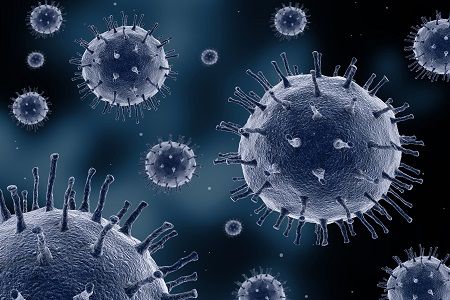HIV Officially Listed as a Carcinogen
It’s been known that people with HIV have a substantially higher risk of getting certain kinds of cancer, including anal, liver, and lung, as well as Hodgkin lymphoma, according to the National Cancer Institute. As of November 3, HIV is officially considered a carcinogen.

It’s been known that people with the human immunodeficiency virus (HIV) have a substantially higher risk of getting certain kinds of cancer, including anal, liver, and lung, as well as Hodgkin lymphoma, according to the National Cancer Institute. As of November 3, HIV is officially considered a carcinogen.
With the addition of five viruses and two compounds, the US Department of Health and Human Services (HHS) 14th Report on Carcinogens is now up to 248.
The five viruses are:
- HIV-1
- Human T-cell lymphotropic virus type 1 (HTLV-1)
- Epstein-Barr virus (EBV)
- Kaposi sarcoma-associated herpesvirus (KSHV)
- Merkel cell polyomavirus (MCV)
The two compounds are:
- Trichloroethylene (TCE) — found in adhesives, rug cleaning fluids, and paint removers
- Cobalt and cobalt compounds that release cobalt ions in vivo — found in paints and batteries
The relationship between HIV and cancer has long been explored and continues to be a hot topic. We know that when someone with HIV is diagnosed with cervical cancer, non-Hodgkin lymphoma, or Kaposi sarcoma (lesions that develop in soft tissues), it means that the patient has progressed to the acquired immunodeficiency virus (AIDS).
But, how was the direct HIV-cancer link finally put into writing?
First off, the HHS stresses that the report does not claim that these viruses and compounds directly cause cancer, but rather that they are cancer hazards. Viruses present this potential problem because they weaken the immune system and open the door for other disease.
The Report is prepared by the National Toxicology Program (NTP) and includes other carcinogens, like environmental factors such as chemicals and X-rays. Globally, about 12% of human cancers could be attributed to viruses. So it’s not hard to see why this raises concern.
“The listings in this report, particularly the viruses, bring attention to the important role that prevention can play in reducing the world’s cancer burden. There are also things people can do to reduce their exposure to cobalt and TCE,” said Linda Birnbaum, PhD, director of the NTP and National Institute of Environmental Health Sciences (NIEHS).
Related Coverage:
Coffee Is Not a Carcinogen… Unless It’s Very Hot
Meat Lovers Beware: Processed Meats Linked to Cancer
Add French Fries, Potato Chips to the List of Cancer-Causing Foods